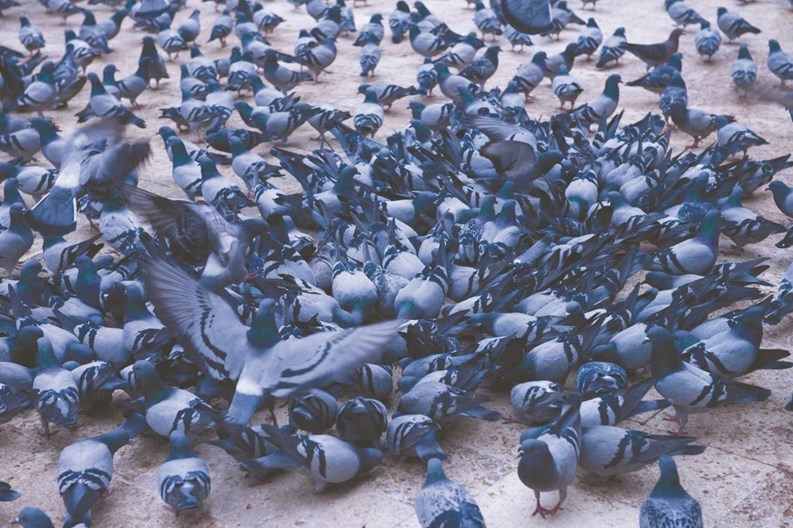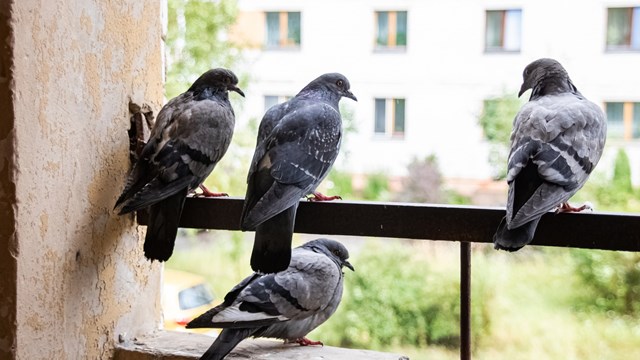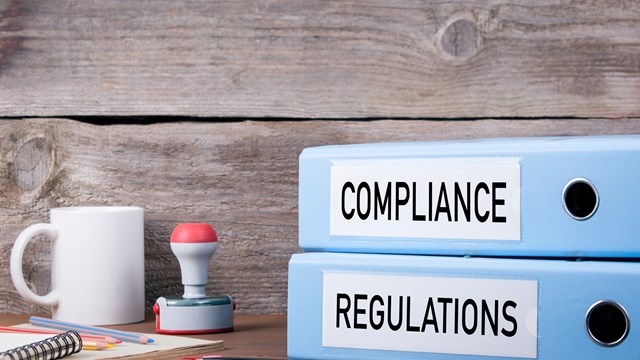There are a few things that New Yorkers just take for granted as part of life in Gotham: Traffic is one. Noise—whether from the street outside or the neighbors upstairs—is another.
And so are swarming, fluttering, cooing, pecking hordes of grey-feathered 'sky rats'—or pigeons, as some insist on calling them. Sure, there are other nuisance birds that plague the area's human inhabitants, like territorial seagulls in waterfront neighborhoods and Canada geese that befoul lawns and golf greens further inland, but pigeons are among the most obnoxious of urban avians.
For the Birds
Pigeons have congregated on and around human dwellings for centuries—and for centuries, people have had to deal not only with the birds' mess, but with the health hazards associated with it.
“Pigeons' fecal material carries numerous diseases,” says Arthur Katz, president of Knockout Pest Control in Uniondale, 40 of them, to be precise.
To make matters worse, “Pigeons are what we call ‘dirty nesters,'" says Rebecca Fyffe, a wildlife educator with the Chicago-based Wildlife Control Policy Institute. "They spackle their nests with their own droppings, so when they flap their wings and climb around, it forms a dust. All birds carry salmonella in their droppings, but it is particularly common among pigeons, so that's really a big concern. Histoplasmosis is a fungal lung disease that occurs in bird roosts. If birds have lived in an [enclosed area], and someone has to go up there to do work once those spores have had a chance to really grow and propagate, they can become infected [from breathing the airborne particles], even if they only breathe in a few spores.”
Worse, if the pigeons hang out near the HVAC intake units, their droppings can fall directly into the vents, which have the potential to deliver dangerous germs and microbes directly into your building's breathable air. Dropping-contaminated vents need to be thoroughly sterilized—an expensive proposition in the best of times.
And there are other concerns too. Bird droppings are extremely acidic, according to the pros—so much so in fact that over time, accumulated feces can actually corrode metal and stone, weakening the structural integrity of everything from bridges to building facades. Finally, it goes without saying that a gorgeous façade becomes not quite as gorgeous when it’s covered in bird droppings. And like it or not, aesthetics do have an impact on the bottom line. “What’s the value of an apartment if I go to sell it, and the balcony’s covered in pigeon droppings?” exclaims Heath Waldorf, vice president of Bell Environmental in Parsippany, New Jersey.
Ruling the Roost
When birds aren't on the wing, they're feeding and/or roosting—and most birds are experts when it comes to identifying cozy-looking places to congregate, feed, and build nests. As it happens, many of those cozy-looking spots are man-made—and a dense urban environment like New York City is chock full of them.
City life is easy for pigeons, says Katz. “They have harborage, and they have food—and that’s what birds need. There’s plenty of that in New York—plenty of places to live, roost, and eat.” Just as vultures are adept at finding and devouring fresh road kill, urban pigeons are uncannily good at locating food. They’re social too, says Katz; if only one side of a building faces the street, that’s the side where the pigeons hang out. “They sit on the side of a building where there’s traffic— they like to watch people," he says. "They watch for them to drop food.”
And as anyone who’s ever set foot in Central Park well knows, pigeons don’t exactly shy away from people. In fact, they can get right up in your face. Just like New Yorkers. “They’re a bird of opportunity,” says Tom Jordan, head of the bird control unit at Arrow Exterminating Co., Inc. in Lynbrook. “People feel bad for them and feed them.” Pigeons know where to go to find these generous feeders. “They make their rounds.”
And just like New Yorkers, pigeons make do with less-than-ideal living conditions. “They’re adaptable to anything,” Jordan says. “Other birds will only nest in the highest part of a tree. Not pigeons. Pigeons will nest right where they land.”
So if you're at a loss as to why your co-op or condo is overrun with flocks of scraggly pigeons, take a look upward. "If your building has large, commercial HVAC equipment raised on legs above the roof surface, it creates virtual bird condos," says one bird pro. Gotham's iconic rooftop water tanks are also a prime roosting spot for pigeons.
Prevention is Key
While most wild migratory birds—including some rather mundane species, like seagulls—are protected under federal law, New York's pigeon population enjoys no such protection. "You can't disturb the nest of a protected bird," says Fyffe, "or take their eggs or young away. But if there’s a nest full of pigeon eggs, you can just scrape it right off and throw it in the garbage and hope they’ll go build a nest somewhere else."
The scrape-and-dump approach only gets you so far, however—particularly if your building is a hot roosting property. Avian pros agree that ultimately, the key to successful bird control is prevention—and that begins with physically blocking the birds' access to attractive perches and nesting areas. This can be done a lot of different ways, ranging from the very inexpensive to the very pricey. Some methods involve physical alteration of the existing architecture; some use chemical or electronic deterrents; still others are as simple as posting a fake owl or hawk in a conspicuous spot to frighten nuisance birds.
Physical barriers are the first line of defense against roosting, says Fyffe. By installing slippery metal 'bird slides' that create an angle that birds can't stand on, thin wires, or roosting spikes that annoy birds when they try to alight on a ledge, property owners and managers are effectively telling birds to move along.
More technologically-sophisticated methods are available as well, including motion-activated water sprayers that squirt birds as they attempt to land, and electrical strips that can be installed wherever birds are perching. A very mild electrical charge pulses through the strip every few seconds, irritating birds and strongly encouraging them to seek shelter elsewhere. These systems may use batteries or solar chargers, so while they can be expensive to install, they can be relatively cheap to operate over the longer term.
Sound is another weapon in the anti-bird arsenal. Recordings of pigeons in distress can be played at intervals to warn others away from the area, as can recorded predator sounds. High-frequency ultrasonic deterrents are yet another option. These sounds are too high-pitched for a human to hear, but are extremely unpleasant for birds, and can encourage them to give your building a wide berth.
Cost & Ethics
Using humane means to deter birds is a big concern for folks who love animals—even pesky birds—but who aren't okay with having their property taken over by Mother Nature's squawking hordes. While some suburban communities have taken drastic steps to curb overpopulation by waterfowl (such as rounding up Canada geese and gassing them with carbon monoxide, as was done on Long Island and in New Jersey in 2010, despite much public outcry), most bird control pros and civilians alike would prefer to get rid of birds by non-lethal means.
“We don’t kill them," says one specialist, "we just chase them out, close up the areas where they’re getting into and let them go find some other spot. There are pest control companies that like to use poison corn, but I’m against using poison, because it can kill non-targeted birds. Nobody wants to poison the cardinals, blue jays and other birds that feed off corn.”
These days, with the movement toward using greener, less invasive ways to solve common property problems, there are so many more 'natural' ways to control pesky birds, it's rarely necessary to resort to killing the offending critters outright. It may take a couple of tries to find what works best for your community, and sometimes a bird problem requires a combination of physical, chemical and behavioral measures to really be considered solved. With patience and ingenuity however, it's certainly doable. Which specific method works best for your community is a question that should be worked out with the help of an experienced avian pest expert.
Hannah Fons is an associate editor at The Cooperator. Massachusetts-based freelance writer Marie Auger contributed to this article.







Leave a Comment